March 18, 2010
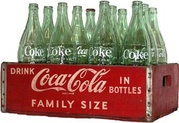
In this interview, Doug McCoy explains how the Coca-Cola bottle got its distinctive contour shape and charts the evolution of the brand’s packaging over its more than 100-year history. McCoy also offers tips on how to find old dumpsites that might contain Coca-Cola treasures, and explains the story of the rare 8-ounce bottle that sold in Lexington, North Carolina during the 1960s. To learn more about McCoy, visit his blog at cocacolabottleman.wordpress.com or check … (continue reading)
March 17, 2010
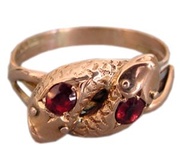
In this interview, “Antiques Roadshow” jewelry appraiser Joyce Jonas offers a survey of turn-of-the-century jewelry styles. Looking at the defining aspects of Arts and Crafts, Art Nouveau, and Edwardian jewelry, Jonas explains the influence of Queen Alexandra and other prominent figures, as well as the impact of such materials as diamonds and platinum…. (continue reading)
March 16, 2010

In this interview, “Vintage Hats & Bonnets” author Sue Langley discusses hats from the Victorian era to the age of the flappers and beyond. Langley describes the differences between cloches, Gainsboroughs, bonnets, and boaters. She also delves into her collection of fashion plates, photos, and other hat-related ephemera. The second edition of Langley’s book, published by Collector Books in 2009, is available from Amazon…. (continue reading)
March 9, 2010

Ivor Abadi, founder of The Twisted Wheel, talks about the Manchester club’s role in the birth of the British mod culture and the northern soul music-and-dance movement during the 1960s. Memorabilia from the club and information about its history can be found at thetwistedwheel.com.
Northern soul is basically American soul music that became the popular soul music of Northern England. The Twisted Wheel opened in 1963 in Manchester, and what might be termed “soul music” … (continue reading)
March 4, 2010
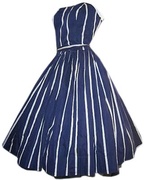
In this interview, Kim Casamassima discusses the rockabilly fashions of the 1950s and explains how the vintage rockabilly look has been revived and adapted over the years. She also discusses the stylistic clichés and misperception that often stand in the way of an accurate understanding of the decade, a time when even tough guys wore penny loafers and pompadours were the exception rather than the rule.
Jayne Mansfield is buried in my hometown. You could drive … (continue reading)
February 26, 2010

Gary Sullivan is a clock and furniture dealer, as well as an appraiser for “Antiques Roadshow.” In this scholarly interview, Sullivan explains the differences between early American tall-case, banjo, and dwarf clocks and offers tips on what to watch out for when buying these popular antiques. Sullivan’s book, “Harbor and Home: Furniture of Southeastern Massachusetts, 1710-1850,” was published last year. He can be reached via his website, www.garysullivanantiques.com.
As a teenager, I got into repairing … (continue reading)
February 25, 2010
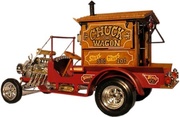
In this interview, Dave Rasmussen talks about show rod model car designers Tom Daniel and Ed Roth and such classic creations as the Tijuana Taxi and Rommel’s Rod. He also touches on the genre’s fascination with skeletons and laments how young show rod enthusiasts of the ’60s and ’70s deprived themselves of valuable future collections by blowing their cars up for kicks in their backyards. Rasmussen can be reached via his website, Dave’s Show … (continue reading)
February 19, 2010
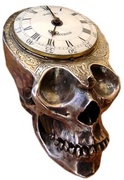
In this interview, historian and art director Hayden Peters charts the evolution of mourning jewelry from the 16th century through its most prolific period during the reign of Queen Victoria. Along the way, he discusses how mourning jewelry differs from sentimental jewelry, and highlights such genres as hairwork, miniature portraiture, and symbolism. Based in Australia, Peters can be contacted via his website, www.artofmourning.com, which is a member of our Hall of Fame.
Growing … (continue reading)
February 11, 2010
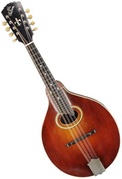
As the cofounder of Gryphon Stringed Instruments, Richard Johnston has spent a good part of his life around guitars, mandolins, and other stringed instruments. An appraiser on “Antiques Roadshow,” Johnston is also an author, whose most recent title traces the history of C. F. Martin & Company. In this interview, Johnston explains the histories of Gibson and Martin, including their early forays into mandolin and ukulele making, and weighs in on the effects that … (continue reading)
February 10, 2010
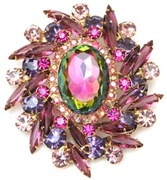
Even though Rosalie Sayyah’s chief passion is for a relatively common product—costume jewelry—what she does with these baubles and bangles is rare. She and shop manager/goldsmith Lucia Sayyah repair them, from rhinestone necklaces and earrings to bracelets and brooches. In this interview, Rhinestone Rosie, as she is known to customers of her Seattle store and fans who have seen her on “Antiques Roadshow,” describes the origins of rhinestones and explains what makes a piece of … (continue reading)
February 5, 2010
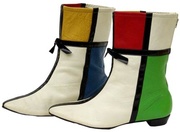
Jonathan Walford is the author of “The Seductive Shoe” and several other fashion titles. A curator and a collector, Walford owns about 700 pairs of shoes dating from the 17th century to the present, with a focus on women’s shoes from the 1920s to the 1970s. To learn more about Walford, visit www.kickshawproductions.com.
I moved to Toronto in the early 1980s because I wanted to work at the Royal Ontario Museum, … (continue reading)
February 4, 2010

As the publisher and editor-in-chief of “Adornment, The Magazine of Jewelry and Related Arts” Elyse Karlin gets to spend most of her time looking at, researching, and thinking about jewelry. In this wide-ranging interview, Karlin places the U.S. branch of Arts and Crafts in context with contemporary jewelry of the time in Europe, discussing the prominent role of women in the movement, the influence of the Pre-Raphaelites, and the stylistic differences between British and … (continue reading)
February 3, 2010

For more than 25 years, Richard Doty was entrusted with the keys to the Smithsonian’s National Museum of American History’s legendary coin vault, which houses some of the most important coins in the world. Doty’s “America’s Money, America’s Story” is one of the most respected books on the subject of U.S. coins and currency, and his last book with Whitman Publishing, “Pictures From a Distant Country,” focused on obsolete U.S. currency. … (continue reading)
January 27, 2010
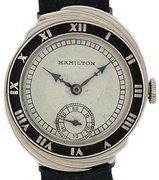
In this interview, Don Levison explains how wristwatches evolved from pocket watches and ladies’ bracelet watches, weighs in on the advantages of collecting vintage Hamiltons, and shares his unabashed enthusiasm for Patek Philippe, Cartier, and other classic brands.
I got interested in pocket watches from working on mechanical things. I had an old car, and working on it gave me immediate satisfaction. It’s a thrill to fix something and get it to run. But I … (continue reading)
January 26, 2010
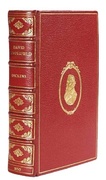
Matthew Haley is a books and manuscripts specialist at Bonhams in London. Haley is not just in the book business, he’s an avid fan of books—from their physicality and design to the literature and poetry between their covers. Recently we spoke to Haley about first editions, the difference between first editions and first printings, and some of the most collectible titles and authors on the market today.
Strictly speaking, a book’s edition refers to the setting of … (continue reading)















 How a '60s Power Couple Taught Architects and Dancers To Find Their Inner Hippie
How a '60s Power Couple Taught Architects and Dancers To Find Their Inner Hippie Factory-Fresh 1955 Chevy Nomad Emerges From 40-Year Hibernation
Factory-Fresh 1955 Chevy Nomad Emerges From 40-Year Hibernation Crush the Best-Dressed List: Our Style Guide to a Century of Dazzling Party Dresses
Crush the Best-Dressed List: Our Style Guide to a Century of Dazzling Party Dresses WWII War Paint: How Bomber-Jacket Art Emboldened Our Boys
WWII War Paint: How Bomber-Jacket Art Emboldened Our Boys Dark Art: Spectacular Illusions from the Golden Age of Magic
Dark Art: Spectacular Illusions from the Golden Age of Magic Mari Tepper: Laying it on the Line
Mari Tepper: Laying it on the Line Nice Ice: Valerie Hammond on the Genteel Charm of Vintage Canadian Costume Jewelry
Nice Ice: Valerie Hammond on the Genteel Charm of Vintage Canadian Costume Jewelry How Jim Heimann Got Crazy for California Architecture
How Jim Heimann Got Crazy for California Architecture Modernist Man: Jock Peters May Be the Most Influential Architect You've Never Heard Of
Modernist Man: Jock Peters May Be the Most Influential Architect You've Never Heard Of Meet Cute: Were Kokeshi Dolls the Models for Hello Kitty, Pokemon, and Be@rbrick?
Meet Cute: Were Kokeshi Dolls the Models for Hello Kitty, Pokemon, and Be@rbrick? When the King of Comedy Posters Set His Surreal Sights on the World of Rock 'n' Roll
When the King of Comedy Posters Set His Surreal Sights on the World of Rock 'n' Roll How One Artist Makes New Art From Old Coloring Books and Found Photos
How One Artist Makes New Art From Old Coloring Books and Found Photos Say Cheese! How Bad Photography Has Changed Our Definition of Good Pictures
Say Cheese! How Bad Photography Has Changed Our Definition of Good Pictures Middle Earthenware: One Family's Quest to Reclaim Its Place in British Pottery History
Middle Earthenware: One Family's Quest to Reclaim Its Place in British Pottery History Fancy Fowl: How an Evil Sea Captain and a Beloved Queen Made the World Crave KFC
Fancy Fowl: How an Evil Sea Captain and a Beloved Queen Made the World Crave KFC